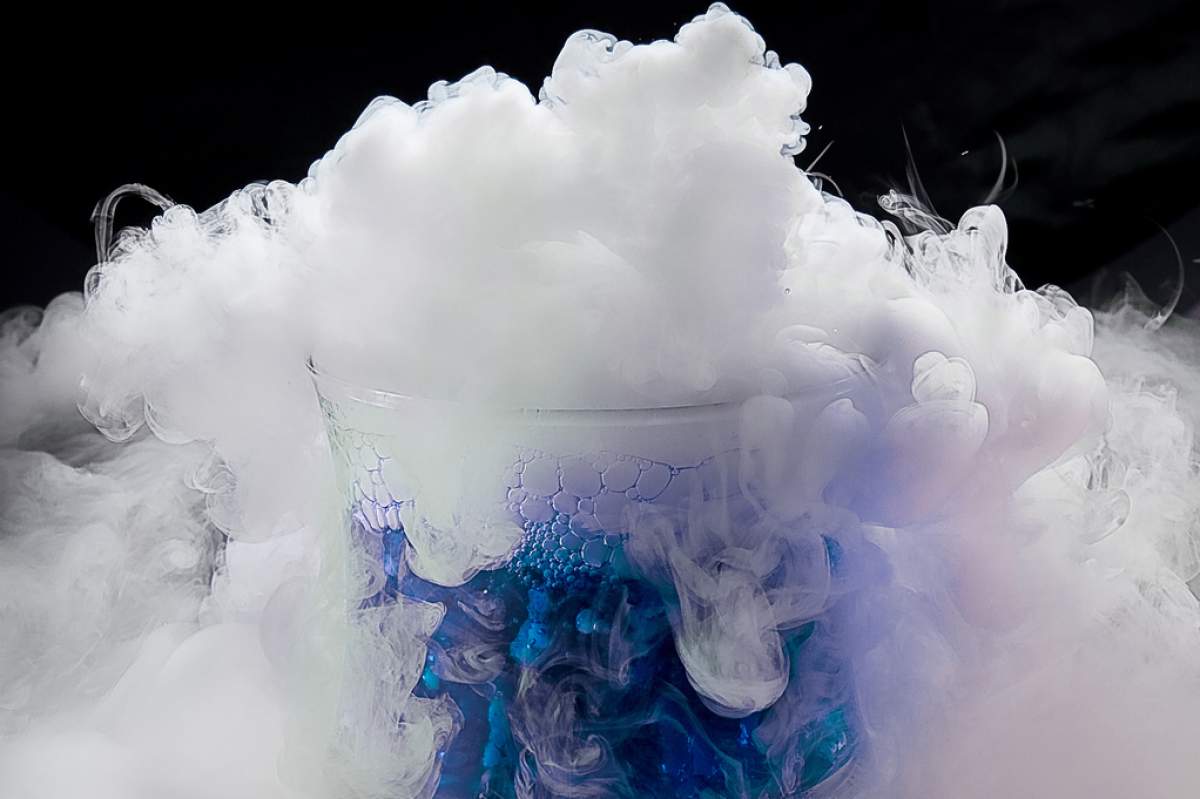
Halloween is a fun time for children and adults alike, but there is no reason it cannot also be an educational time. Try these five fun activities with your kids (or kids, teach something to your parents) for a fun Halloween weekend! And please, remember that science is fun but should always be supervised by an adult.
So break out the long white coat and practice your evil laugh, it's time for science! Muwahahahahaha!
An Eerie, Glowing Drink
What you need: Tonic water, ice cube trays, and a blacklight
What to do: Make ice cubes out of tonic water (tonic water on its own can taste bitter) and add them to a glass of water. Shine a blacklight on the glass and watch the liquid glow blue!
How it works: Tonic water contains quinine and quinine has fluorescent properties. Fluorescent materials absorb energy from light sources; that is, the electrons in the atoms of the material become excited. But the electrons in fluorescent materials will quickly start to calm down, releasing any excess energy in the form of visible light. Learn more about the fluorescent quality of quinine at A Moment Of Science!
Real Life Vampires
What you need: Art supplies such as poster board, construction paper, scissors, crayons, Â and markers
What to do: Conduct a zoological inquiry about Desmodus rotundus, also known as the vampire bat. Read about these fascinating creatures over on the National Geographic, Kids! website and make a poster about the only known mammals to survive by consuming blood. Make or draw your own vampire bats with your art supplies, attach these creations to your poster board, and write out facts about vampire bats next to your pictures.
Vampire bats really do drink blood, but they won't be deterred by garlic. Vampire bats can be dangerous (they can spread rabies) but they are also known to share food with one another and even be friendly to humans.
Static Electricity Powered Ghost
What you need: White tissue paper (or whatever color you would like your ghost to be), a ruler, a balloon, scissors, markers, and a head of hair
What to do: Draw a small ghost (about 4 cm long) on the tissue paper, decorate it, and cut it out. Make as many ghosts as you like. Lay your ghosts flat on a table. Now, blow up the balloon and tie it. Rub the balloon against your hair for about 10 seconds. Now it is time to make your ghost dance!
Slowly lower the balloon towards the ghosts. As the balloon approaches the ghosts the ghosts will begin to move; with a little practice you can even get them to float between the table and the balloon! Remember to recharge your balloon every now and then by rubbing it against your hair.
How it works: Rubbing a balloon against your hair charges it with static electricity. That is, the balloon collects negatively charged particles called electrons. A negatively charged item will attract (light) positively charged items. The ghosts are light enough to be drawn up towards the balloon by the negative charge.
Thanks goes to ScienceBob for this great experiment!
Pumpkin Powered Math
What you need: A pumpkin (or two, or three), a large spoon, and safe pumpkin carving tools
**Caution! Pumpkin carving can be dangerous. You should always ask for the help of a responsible adult when using pumpkin carving tools of any kind.**
What to do: How many pumpkin seeds do you think are in a pumpkin? Write down your guess and then remove the top of one of the pumpkins. A responsible adult should cut off the tops of the pumpkins.
Scoop out the slimy insides of the pumpkin and then practice simple math (counting, addition, and subtraction) using the pumpkin seeds. Once you have counted all of the pumpkin seeds compare it to the guess you made. How well did you do?
Once you are finished counting the pumpkin seeds, carve a scary face into your pumpkin with the help of an adult.
Spooky Smoke
What you need: A pound or two of dry ice (there are distributors in many cities and towns, check online for businesses that sell dry ice), a large bowl, and a spoon
**Caution! Dry ice is dangerous. Only adults should handle dry ice and no one should ever touch dry ice with their bare skin (use heavy gloves). Dry ice should never be consumed. Dry ice is frozen carbon dioxide and carbon dioxide can accumulate in enclosed areas and become toxic, so make sure any room you have dry ice in is well ventilated **
What to do: Let's face it, dry ice is just plain fun on its own. Throw a chunk in a bowl and watch the gas float out. You can also use dry ice to set a spooky mood for your Halloween haunted house by adding some larger chunks to a few inches of hot water (just make sure no one can accidentally touch the dry ice). Â The gas will billow out in waves.
Another fun activity is to firmly press a spoon against a small chunk of dry ice. The dry ice will begin to quickly sublimate (more on that below) where the spoon is touching it and cause the spoon to vibrate. The sound of the vibration makes the spoon sound like it is screaming! Scary!
How it works: Dry ice is just frozen carbon dioxide. But instead of melting as it gets warmer (like frozen water), this frozen subsistence sublimates. That is, the carbon dioxide changes from a solid, directly into a gas.
We hope your family has fun with these activities. Have a safe and fun Halloween!









